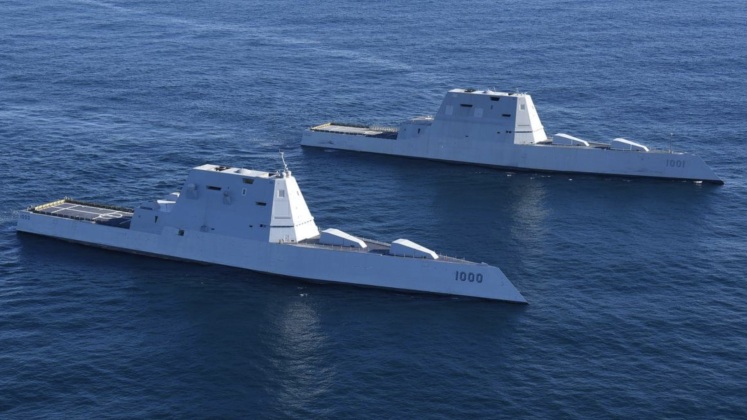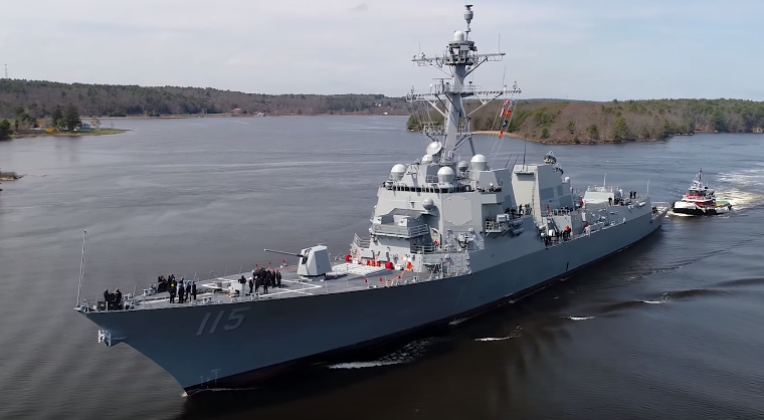The United States Navy has released details of a possible configuration for a next generation destroyer, which is currently being pursued under the DDG(X) program to succeed the Arleigh Burke Class in production. It is expected that 89 Burke Class ships will enter service, with these currently comprising the entire destroyer fleet other than one Zumwalt Class stealth ships which is not full operational. Cuts to the Zumwalt program from 32 to three ships, due to significant performance issues and cost overruns, resulted in a larger production run for the Burke Class which, despite dating back to the Cold War, is still the most capable U.S. or Western destroyer at sea by a considerable margin. The Burke is expected to remain in production beyond 2027 due to delays in developing a replacement. The Burke Class has strongly influenced foreign destroyer designs, most notably the Japanese Atago and Maya class ships and the much larger South Korean Sejong the Great Class. It is expected that the future destroyer will replace older Burke Class ships in service, and could also replace the country’s heaver Ticonderoga Class cruisers which are nearing the end of their service lives and are not likely to be replaced by similar sized vessels in order to reduce costs.

The age of the Arleigh Burke Class has limited its ability to continue receiving upgrades and enhancements, in particular new armaments such as hypersonic and directed energy weapons as well as new sensors, with the ship’s basic design deficient in space, weight, and power. With more ambitious clean sheet designs such as the Zumwalt Class and the Freedom and Independence classes of Littoral Combat Ship (LCS) considered to have effectively failed, the Burke’s replacement is expected to be a more conservative design that is loosely based on its predecessor but has more room for modernisation. Additional sensor capacity, longer-range armaments, and accommodations for directed-energy weapons are expected to be central influences on the design, as are improvements to survivability and power output. Acoustic, infrared, and underwater electromagnetic signatures are only expected to be improved by around 50 percent, bringing it closer to par with the Chinese Type 055 Class but being far less ambitious than intended stealth features for the Zumwalt and LCS. The Type 055 is currently widely considered the world’s most capable surface combatant, and the new U.S. navy destroyer will largely be judged on its ability to bridge the performance gap with and potentially restore American leadership in the field.

Among other reported new features of the upcoming ships are the integration of two 600kW lasers to replace the side facing Rolling Airframe Missile (RAM) point-defence system for defence against cruise missiles, as well as a single 150kW frontal laser. Power for these lasers is expected to be provided by a new propulsion system based on the Rolls Royce turbines developed for the Zumwalt Class, which put out 78 megawatts of power. The ship’s offensive firepower remains uncertain, and while the latest variants of the Burke Class the Arleigh Burke Flight III destroyers carrying 96 vertical launch cells for cruise and surface to air missiles conflicting reports indicate that the new ships could carry an equal number or less. This indicates that the ships are not intended to bridge the firepower gap with the Chinese Type 055 Class which deploy 112 cells. Where the Arleigh Burke Class uses Mk 41 VLS cells, the lack of hypersonic weapons compact enough to fit inside these has led to reports that the ships could integrate larger cells for these weapons. This would contrast with the Russian Navy, which is the only one to have integrated hypersonic missiles onto its surface combatants and has done so without changing the size of its vertical launch cells. Use of larger cells on the U.S. ships, however, could allow them to deploy longer ranged missiles in future albeit in smaller numbers
